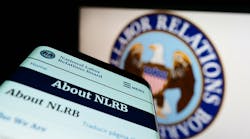A recently proposed reporting requirement for employers aimed at rooting out wage discrimination could end up imposing major additional costs while generating little genuinely helpful data.
The Equal Employment Opportunity Commission (EEOC) proposes to require companies with 100 or more employees that file annual EEO-1 reports to include pay data broken down by gender, race and ethnicity.
Expected to go into effect later this year, the new form also replaces the Labor Department's Office of Federal Contract Compliance Programs' pending equal pay report regulations for federal contractors and subcontractors.
EEOC estimates the average employer will require only 6.6 hours to gather the data and complete the form at a cost of $160, with an additional one-time cost of $378 to develop information systems. These estimates "are not credible and reflect EEOC's woeful misunderstanding of the speed and ease by which complex and customized data can be compiled from computer information systems," according to the U.S. Chamber of Commerce.
Greg Keating, an attorney with Choate Hall & Stewart, termed the EEOC proposal "a draconian development" and an administrative nightmare. He points out that information in W-2 forms, where employers would find the pay data, is not standard because of variables in take-home pay.
The resulting data could be inherently unreliable because it fails to account for factors impacting pay, including seniority and educational levels. "It's not a simple exercise by any means," Keating says. "It will take a lot of manpower and IT resources."
Another concern is privacy. Although the information is supposed to be kept secret, some attorneys have voiced concerns that hackers and litigators eventually will be able to get their hands on the data.
EEOC expects to receive reports on employees in 12 "pay bands" in each of 10 EEO-1 job categories—a total of 120 bands. "It's unlikely to provide the EEOC with genuinely meaningful information about pay discrimination because it doesn't control for anything other than ‘pay band' and EEO-1 category," says Robin Shea of the law firm of Constangy Brooks Smith & Prophete. "It will result in lots of baseless charges against employers who have numbers that look bad but really aren't. It is a blunt instrument."
She also takes issue with the reasoning behind the proposed rule. "It's based on dubious science," Shea states. The rule is intended to attack the frequently-cited observation that women make about 79 cents for each dollar men earn.
"This would be terrible, except that even the government's own economists admit that they can't show the gap is due to discrimination," she says. The "pay gap" compares the average pay of all women in the workforce with the average pay of all men in the workforce. It doesn't control for kind of position held, geography, career ambition, family responsibilities, education, type of employer, length of employment, gaps in employment, era in which one entered the workforce—or anything else.
"Are women paid less because of discrimination? Maybe. I can't say no. But I can't say yes, either. At least, not in this day and age," Shea says. "I suspect that these other factors account for the vast majority of the modern gender pay gap, so why blame it on employment discrimination and impose a significant new burden on employers?"
What can an employer do? It is essential that you take steps to end this kind of discrimination in your organization if it currently exists. When examining your pay practices it is a good idea to have your attorney conduct the review and make recommendations. Any raw data your lawyer generates will be privileged information legally protected from the prying eyes of tort lawyers and government investigators.
David Sparkman is founding editor of ACWI Advance, the newsletter of the American Chain of Warehouses Inc., as well as a member of the MH&L Editorial Advisory Board.



